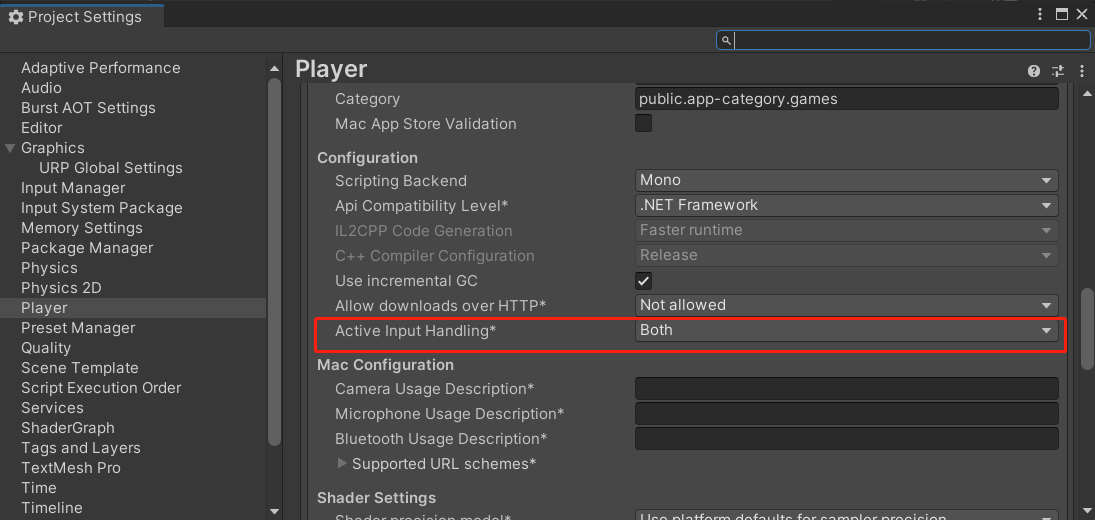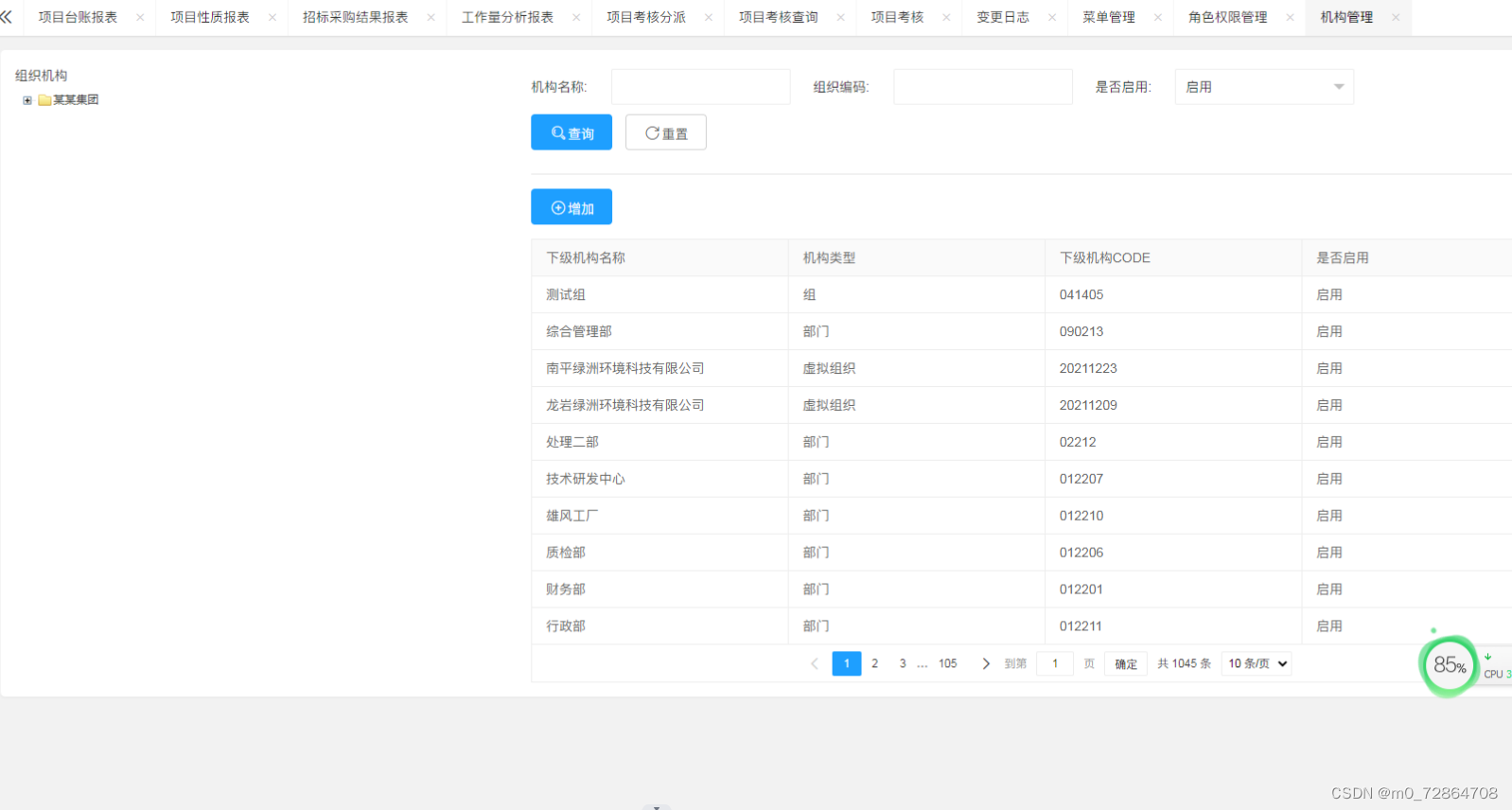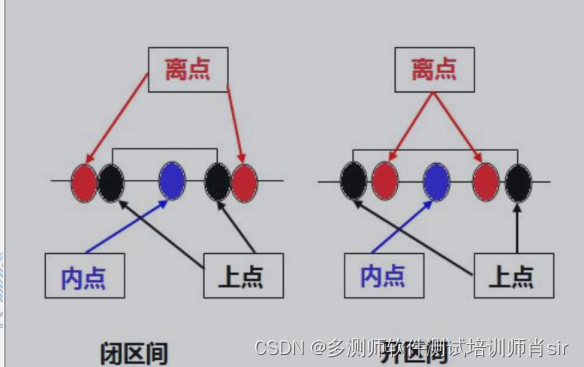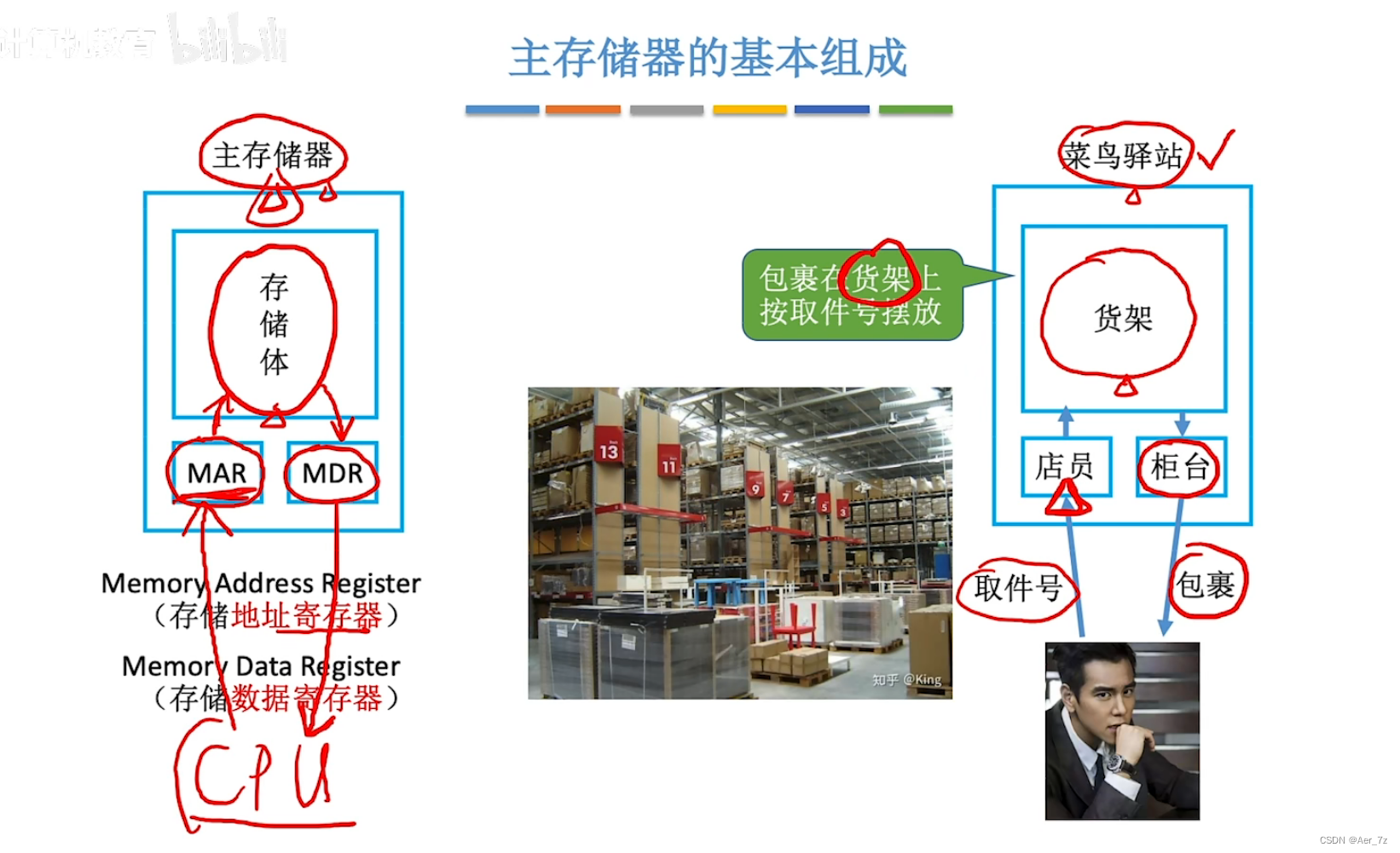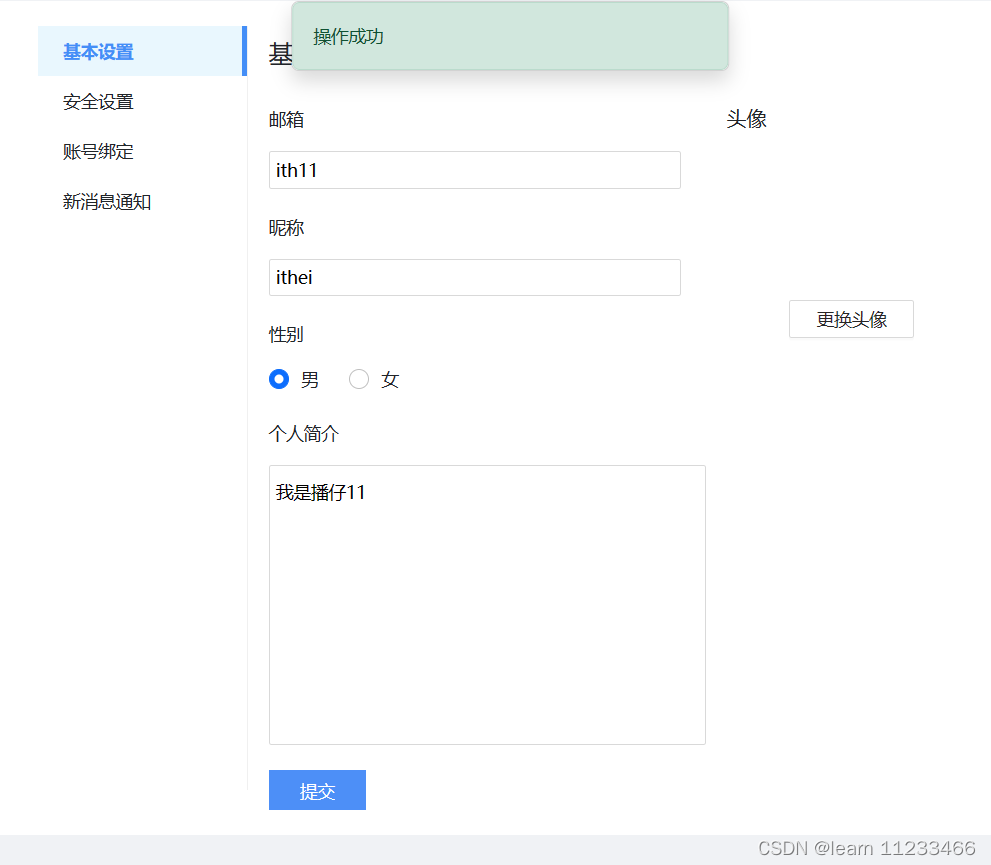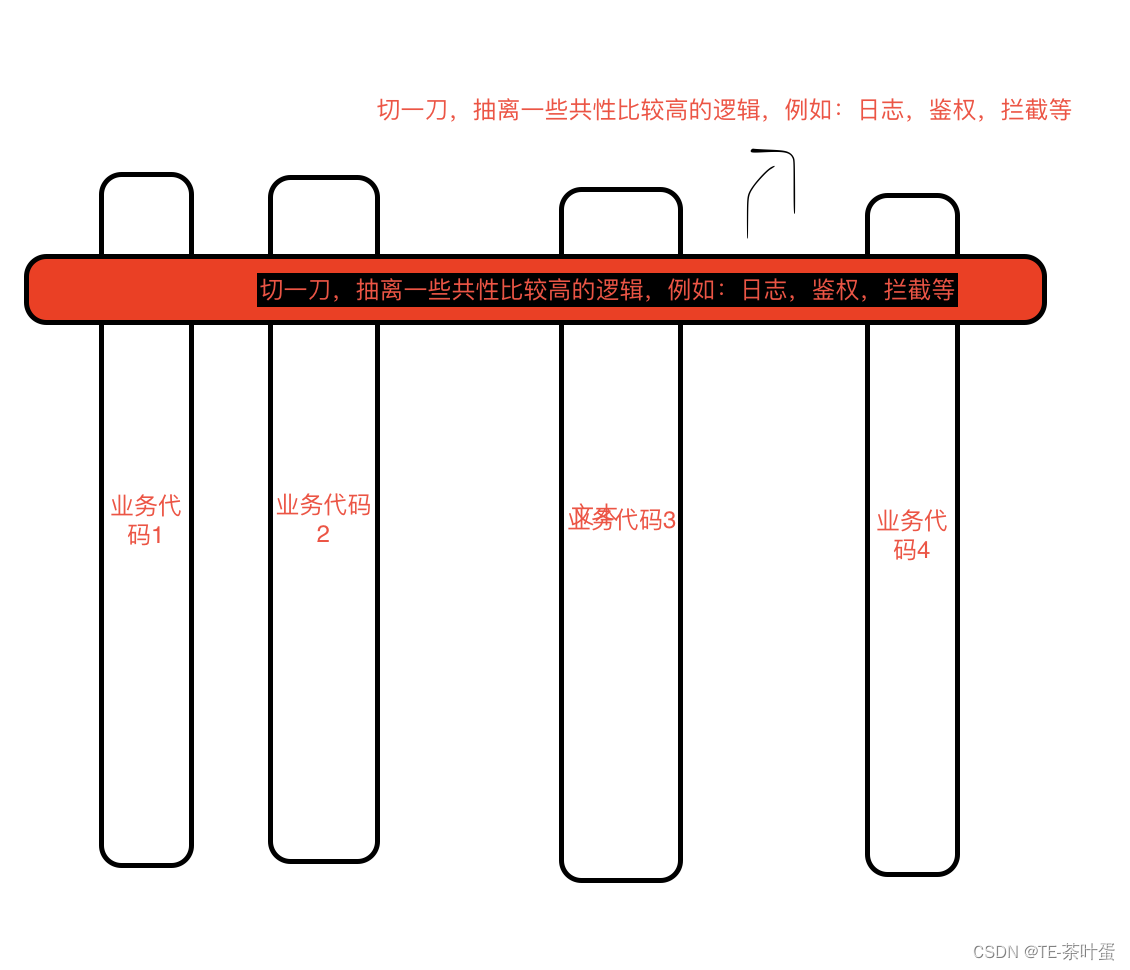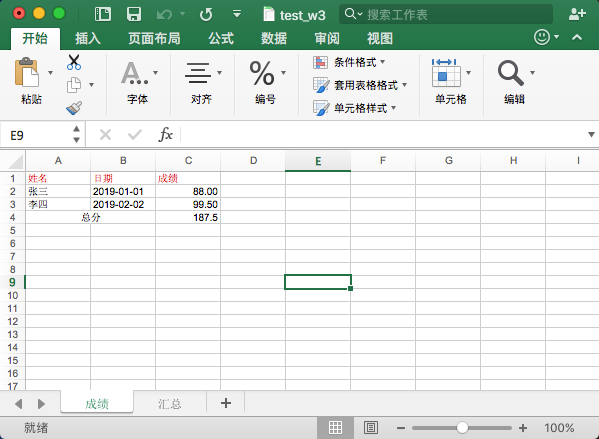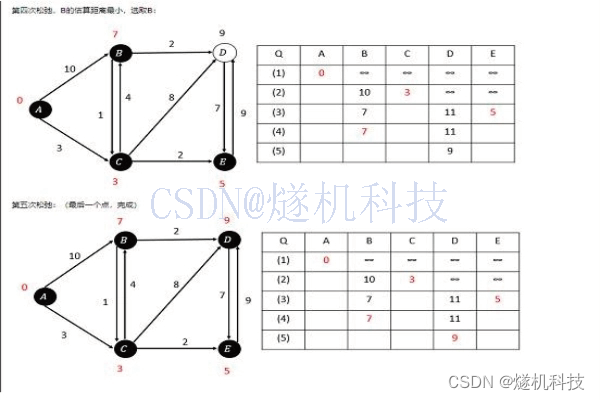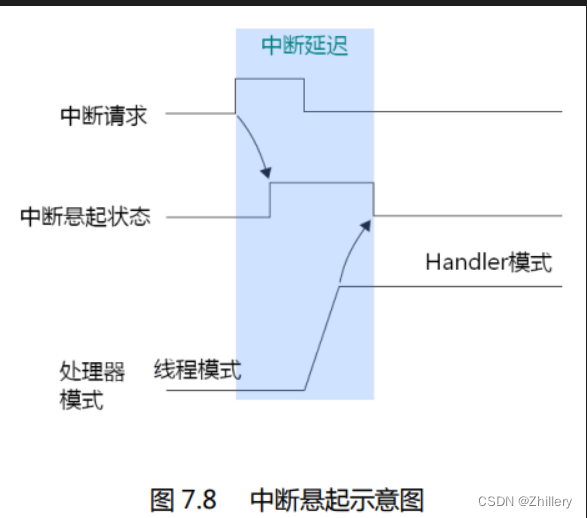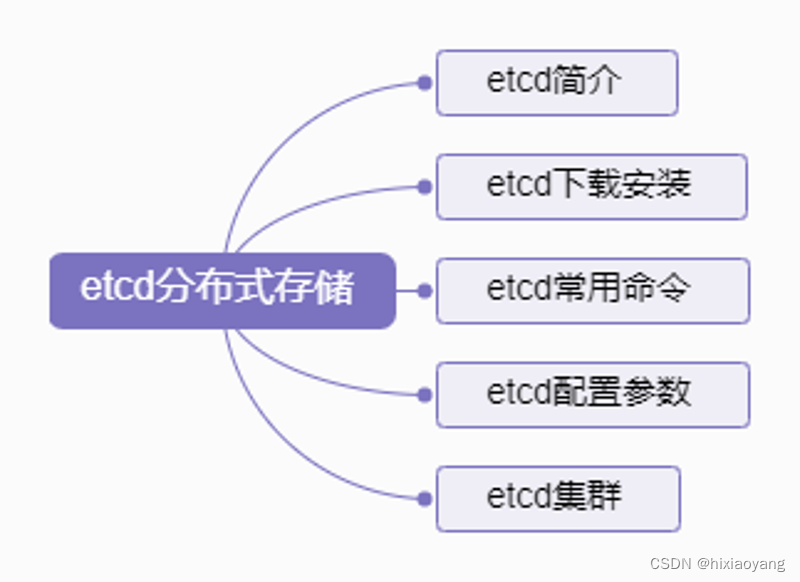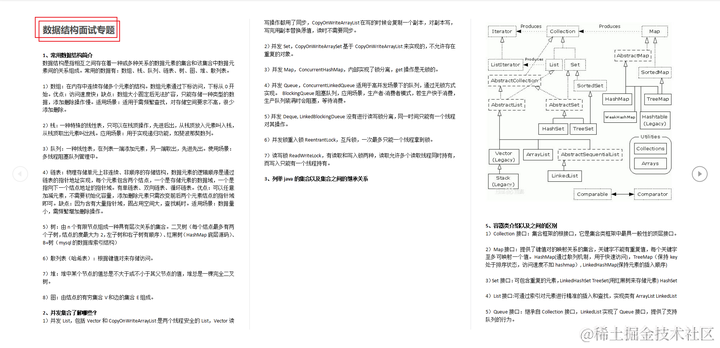今天的内容是SpringMVC的初始化过程,其实也就是DispatcherServilet的初始化过程。
Special Bean Types
DispatcherServlet委托如下一些特殊的bean来处理请求、并渲染正确的返回。这些特殊的bean是Spring MVC框架管理的bean、按照Spring框架的约定处理相关请求,一般情况下是框架内置的,我们当然也可以定制或扩展他们的功能。
这些特殊bean包括:
- HandlerMapping:根据一定的规则把请求映射到对应的HandlerMapping去处理,HandlerMapping可以包含一系列拦截器,进行前置或后置处理。框架默认提供了RequestMappingHandlerMapping(处理@RequestMapping注解方法的)和SimpleUrlHandlerMapping两个HandlerMapping。
- HandlerAdapter:HandlerMapping匹配到请求之后,调用HandlerAdapter具体处理请求。
- HandlerExceptionResolver:发生异常后的异常处理器。
- ViewResolver:处理返回
- LocaleResolver, LocaleContextResolver:本地化处理器
- ThemeResolver:Theme渲染处理器
- MultipartResolver:Multipart处理器,文件上传下载的处理。
- FlashMapManager:跨请求存储和获取“input”和“output”的处理器
Web MVC Config
DispatcherServlet初始化过程中会根据WebApplicationContext的配置(xml或注解方式,前面两篇文章分析过)完成上述特殊bean的初始化,如果DispatcherServlet在WebApplicationContext中没有发现相应的配置,则采用DispatcherServlet.properties文件中的默认配置完成初始化。
DispatcherServlet.properties文件在Spring web mvc包下:
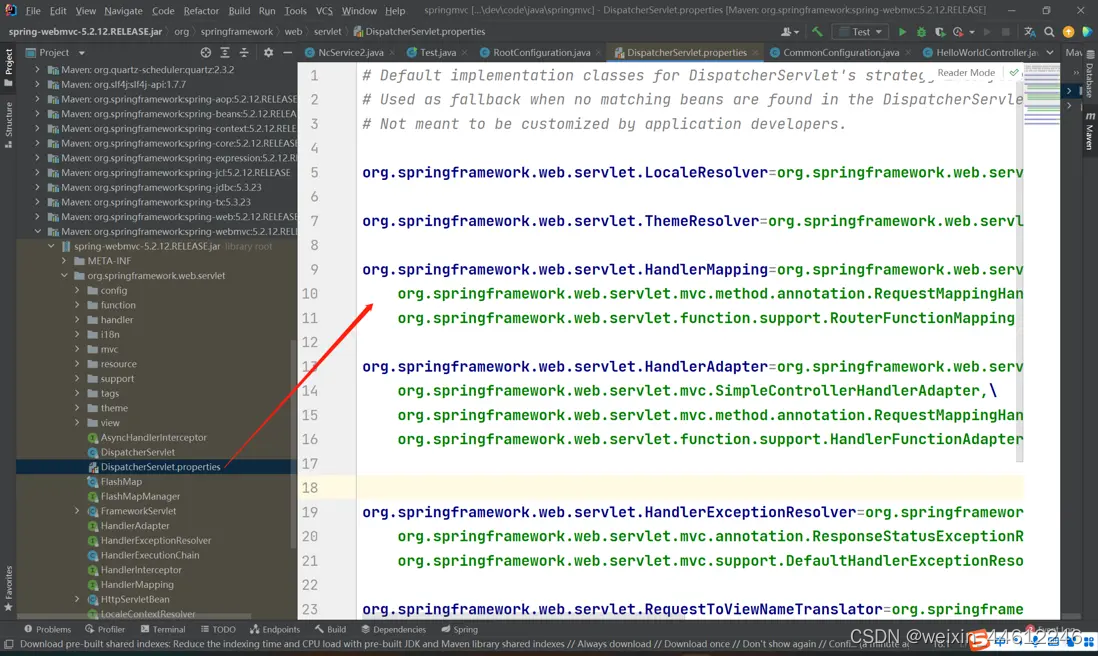
我们猜想Spring MVC框架是通过DispatcherServlet的init方法完成上述各特殊bean的初始化的,下面我们要详细分析一下具体的初始化过程。
Servlet Config
通过注解方式、或通过xml方式初始化DispatcherServlet的具体方法,前面两篇文章已经做过分析,此处不在赘述。
DispatcherServlet的初始化
众所周知,Servlet容器(比如Tomcat)会通过调用Servlet的init方法完成Servlet的初始化。
我们接下来看一下DispatcherServlet的初始化过程,也就是DispatcherServlet的init方法。
先来看一眼DispatcherServlet的类结构:
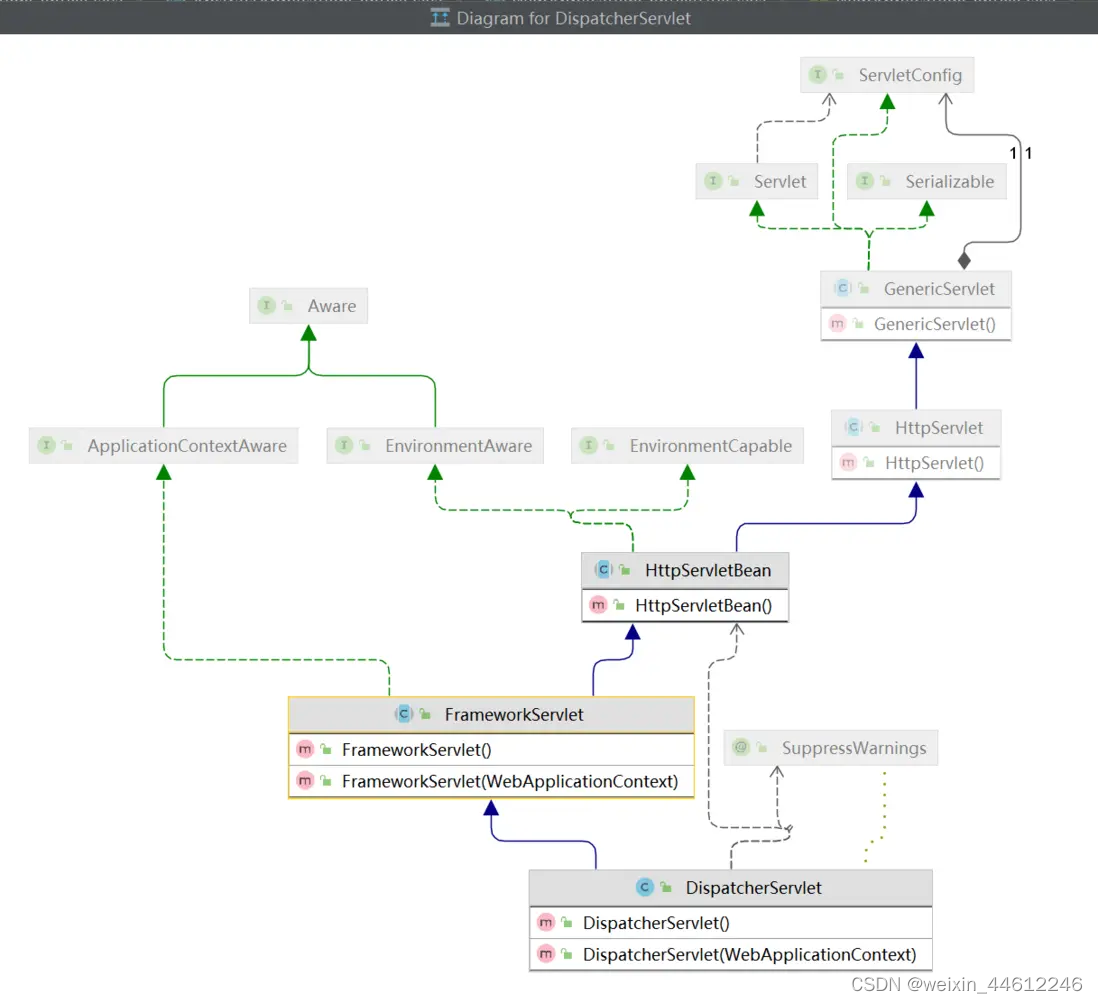
init方法在他的父类HttpServletBean中:
@Overridepublic final void init() throws ServletException {// Set bean properties from init parameters.PropertyValues pvs = new ServletConfigPropertyValues(getServletConfig(), this.requiredProperties);if (!pvs.isEmpty()) {try {BeanWrapper bw = PropertyAccessorFactory.forBeanPropertyAccess(this);ResourceLoader resourceLoader = new ServletContextResourceLoader(getServletContext());bw.registerCustomEditor(Resource.class, new ResourceEditor(resourceLoader, getEnvironment()));initBeanWrapper(bw);bw.setPropertyValues(pvs, true);}catch (BeansException ex) {if (logger.isErrorEnabled()) {logger.error("Failed to set bean properties on servlet '" + getServletName() + "'", ex);}throw ex;}}// Let subclasses do whatever initialization they like.initServletBean();}
上面的代码是对当前Servlet属性的处理,与我们的目标无关,初始化逻辑在最下面的方法initServletBean中,在他的子类(也是DispatcherServlet的直接父类)FrameworkServlet中:
protected final void initServletBean() throws ServletException {...省略部分代码try {this.webApplicationContext = initWebApplicationContext();initFrameworkServlet();}catch (ServletException | RuntimeException ex) {logger.error("Context initialization failed", ex);throw ex;}
该方法中有很多打印log的代码,忽略掉,剩下的就是两个方法的调用:一个是创建webApplicationContext的,一个是initFrameworkServlet,这个initFrameworkServlet是空方法,所以,DispatcherServlet的初始化逻辑,关键就在这个initWebApplicationContext()方法中。
initWebApplicationContext方法很长,我们分段分析一下。
protected WebApplicationContext initWebApplicationContext() {WebApplicationContext rootContext =WebApplicationContextUtils.getWebApplicationContext(getServletContext());WebApplicationContext wac = null;...
首先获取当前ServletContext的RootContext,有关RootContext,参见前面的文章 Spring MVC 四:Context层级。
然后:
if (this.webApplicationContext != null) {// A context instance was injected at construction time -> use itwac = this.webApplicationContext;if (wac instanceof ConfigurableWebApplicationContext) {ConfigurableWebApplicationContext cwac = (ConfigurableWebApplicationContext) wac;if (!cwac.isActive()) {// The context has not yet been refreshed -> provide services such as// setting the parent context, setting the application context id, etcif (cwac.getParent() == null) {// The context instance was injected without an explicit parent -> set// the root application context (if any; may be null) as the parentcwac.setParent(rootContext);}configureAndRefreshWebApplicationContext(cwac);}}}
判断如果DispatcherServlet对象创建的时候,如果在构造方法中已经初始化过WebApplicationContext了,那么就使用该WebApplicationContext,设置上面获取到的RootContext为当前WebApplicationContext的父容器。并且判断该Context是否已经刷新过,如果没有刷新过的话,调用configureAndRefreshWebApplicationContext方法配置并刷新该Context。
前面文章Spring MVC 三 :基于注解配置中我们分析过DispatcherServlet的创建过程,确实在创建的时候就通过构造函数的参数传过来已经创建好的ServletContext了:
protected void registerDispatcherServlet(ServletContext servletContext) {String servletName = getServletName();Assert.hasLength(servletName, "getServletName() must not return null or empty");WebApplicationContext servletAppContext = createServletApplicationContext();Assert.notNull(servletAppContext, "createServletApplicationContext() must not return null");FrameworkServlet dispatcherServlet = createDispatcherServlet(servletAppContext);Assert.notNull(dispatcherServlet, "createDispatcherServlet(WebApplicationContext) must not return null");dispatcherServlet.setContextInitializers(getServletApplicationContextInitializers());...省略代码
所以如果是通过注解方式配置的话,会通过createServletApplicationContext()方法创建ServletContext:
@Overrideprotected WebApplicationContext createServletApplicationContext() {AnnotationConfigWebApplicationContext context = new AnnotationConfigWebApplicationContext();Class<?>[] configClasses = getServletConfigClasses();if (!ObjectUtils.isEmpty(configClasses)) {context.register(configClasses);}return context;}
最终创建的ServletContext是AnnotationConfigWebApplicationContext。
所以如果通过注解方式配置,那就是要走到上面这段逻辑中来的。
否则,如果不是通过注解、而是通过xml配置,也就是说DispactherServlet创建的时候并没有ServletContext,会走到下面的逻辑中:
if (wac == null) {// No context instance was injected at construction time -> see if one// has been registered in the servlet context. If one exists, it is assumed// that the parent context (if any) has already been set and that the// user has performed any initialization such as setting the context idwac = findWebApplicationContext();}if (wac == null) {// No context instance is defined for this servlet -> create a local onewac = createWebApplicationContext(rootContext);}
如果wac为空(DispatcherServlet创建的时候没有设置),那么就判断容器中是否已经注册进来了,如果已经注册了的话,那么Spring framework就会认为其父容器已经设置过了,也做过初始化以及refresh了,直接拿过来用就OK。(我们的应用如果不主动注册的话,就不会有注册进来的Context,所以这段代码就跑不到)。
然后看下面的代码,如果没有发现,就调用createWebApplicationContext创建,createWebApplicationContext方法在创建WebApplicationContext之后,也会设置其父容器为RootContext,之后也会调用configureAndRefreshWebApplicationContext配置和刷新容器,走到和上面第一步(通过注解方式配置,DispatcherServlet创建的时候已经通过构造器设置了一个Context)一致的逻辑中了。
createWebApplicationContext:
protected WebApplicationContext createWebApplicationContext(@Nullable ApplicationContext parent) {Class<?> contextClass = getContextClass();if (!ConfigurableWebApplicationContext.class.isAssignableFrom(contextClass)) {throw new ApplicationContextException("Fatal initialization error in servlet with name '" + getServletName() +"': custom WebApplicationContext class [" + contextClass.getName() +"] is not of type ConfigurableWebApplicationContext");}ConfigurableWebApplicationContext wac =(ConfigurableWebApplicationContext) BeanUtils.instantiateClass(contextClass);wac.setEnvironment(getEnvironment());wac.setParent(parent);String configLocation = getContextConfigLocation();if (configLocation != null) {wac.setConfigLocation(configLocation);}configureAndRefreshWebApplicationContext(wac);return wac;}
首先调用getContextClass()方法获取contextClass:
public static final Class<?> DEFAULT_CONTEXT_CLASS = XmlWebApplicationContext.class;private Class<?> contextClass = DEFAULT_CONTEXT_CLASS;public Class<?> getContextClass() {return this.contextClass;}
可以看到,如果不是通过注解方式启动、而是通过xml配置方式启动的话,创建的ServletContext应该就是这个XmlWebApplicationContext。
创建ServletContext之后,与xml配置方式一样:设置父容器,然后调用configureAndRefreshWebApplicationContext方法配置及刷新容器。
接下来我们看configureAndRefreshWebApplicationContext方法。
configureAndRefreshWebApplicationContext
目前为止,我们前面的猜测:通过DispatcherServlet的init方法初始化各个特殊bean。尚未的到证实 — 在DispatcherServlet的init方法中,我们尚未看到相关的初始化代码。
不过代码还没分析完,还有一个configureAndRefreshWebApplicationContext,我们继续分析。
代码比较长,我们还是分段分析:
protected void configureAndRefreshWebApplicationContext(ConfigurableWebApplicationContext wac) {if (ObjectUtils.identityToString(wac).equals(wac.getId())) {// The application context id is still set to its original default value// -> assign a more useful id based on available informationif (this.contextId != null) {wac.setId(this.contextId);}else {// Generate default id...wac.setId(ConfigurableWebApplicationContext.APPLICATION_CONTEXT_ID_PREFIX +ObjectUtils.getDisplayString(getServletContext().getContextPath()) + '/' + getServletName());}}
为WebApplicationContext设置Id,无关紧要,继续看下面的代码:
wac.setServletContext(getServletContext());wac.setServletConfig(getServletConfig());wac.setNamespace(getNamespace());wac.addApplicationListener(new SourceFilteringListener(wac, new ContextRefreshListener()));设置ServletContext、ServletConfig、以及namespace,之后新增了一个监听器:ContextRefreshListener()。
然后:
// The wac environment's #initPropertySources will be called in any case when the context// is refreshed; do it eagerly here to ensure servlet property sources are in place for// use in any post-processing or initialization that occurs below prior to #refreshConfigurableEnvironment env = wac.getEnvironment();if (env instanceof ConfigurableWebEnvironment) {((ConfigurableWebEnvironment) env).initPropertySources(getServletContext(), getServletConfig());}postProcessWebApplicationContext(wac);applyInitializers(wac);wac.refresh();}
设置环境变量,以及获取初始化参数,最后调用WebApplicationContext的refresh方法。
依然没有看到DispatcherServlet对特殊bean的初始化!而且现在的代码逻辑是转到了ApplicationContext中,是Spring Framework的内容、并不是Spring MVC的内容。
别急,马上就要摸到开关了!
目前的代码确实是转悠到Spring Framework中来了。所以说Spring全家桶,不管是Spring MVC、还是SpringBoot、还是Spring Security,统统都是以Spring Framework为基础的。掌握Spring Framework是掌握Spring全家桶的基础。
ApplicationContext的refresh方法我们很熟悉了,是Spring Framework的关键方法,在AbstractApplicationContext类中实现,该方法最后会调用到finishRefresh()方法:
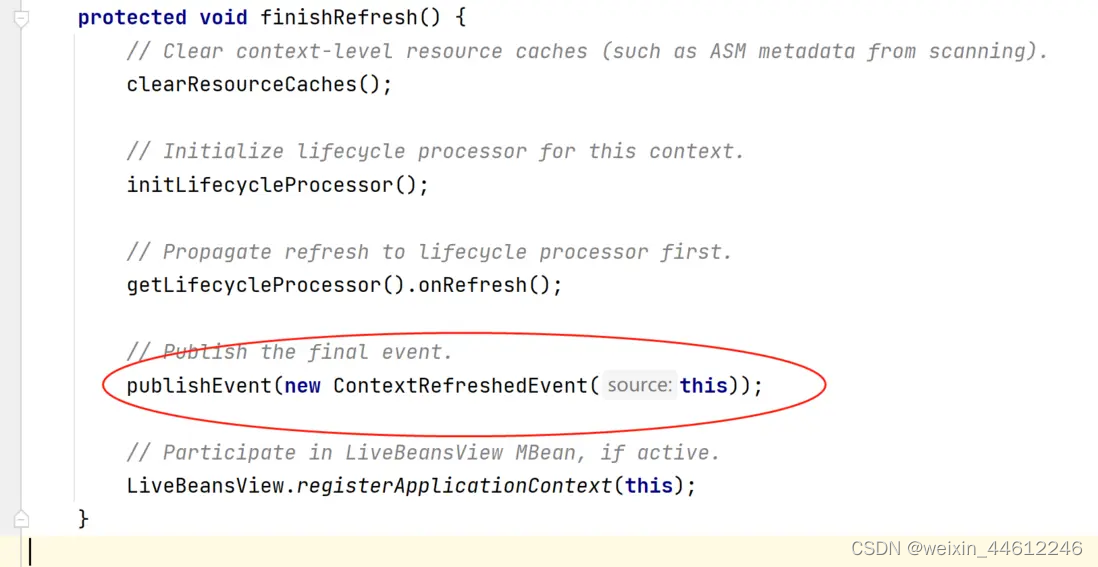
finishRefresh()方法最后会发布ContextRefreshedEvent事件。
没错,前面代码分析过程中,我们确实是在WebApplicationContext容器中注册了一个针对该事件的监听器ContextRefreshListener:
private class ContextRefreshListener implements ApplicationListener<ContextRefreshedEvent> {@Overridepublic void onApplicationEvent(ContextRefreshedEvent event) {FrameworkServlet.this.onApplicationEvent(event);}}
该监听器是定义在FrameworkServlet中的一个内部类,其onApplicationEvent方法会调用到FrameworkServlet的onApplicationEvent方法,这样,通过监听机制,代码逻辑就再次转回到了DispatcherServlet(确切说是他的父类FrameworkServlet)中来了:
public void onApplicationEvent(ContextRefreshedEvent event) {this.refreshEventReceived = true;synchronized (this.onRefreshMonitor) {onRefresh(event.getApplicationContext());}}
最终会调用到DispatcherServlet中来:
@Overrideprotected void onRefresh(ApplicationContext context) {initStrategies(context);}
查看DispatcherServlet代码我们会发现,这个initStrategies正式我们要找的方法,方法参数Context是通过事件传递过来的,因此,DispatcherSerlet在进行初始化的时候可以持有ApplicationContext对象,然后,随心所欲地完成Spring MVC特殊bean的初始化。
篇幅原因,关于DispatcherServlet的具体初始化过程,我们后面分析。
上一篇 Spring MVC 四:Context层级
